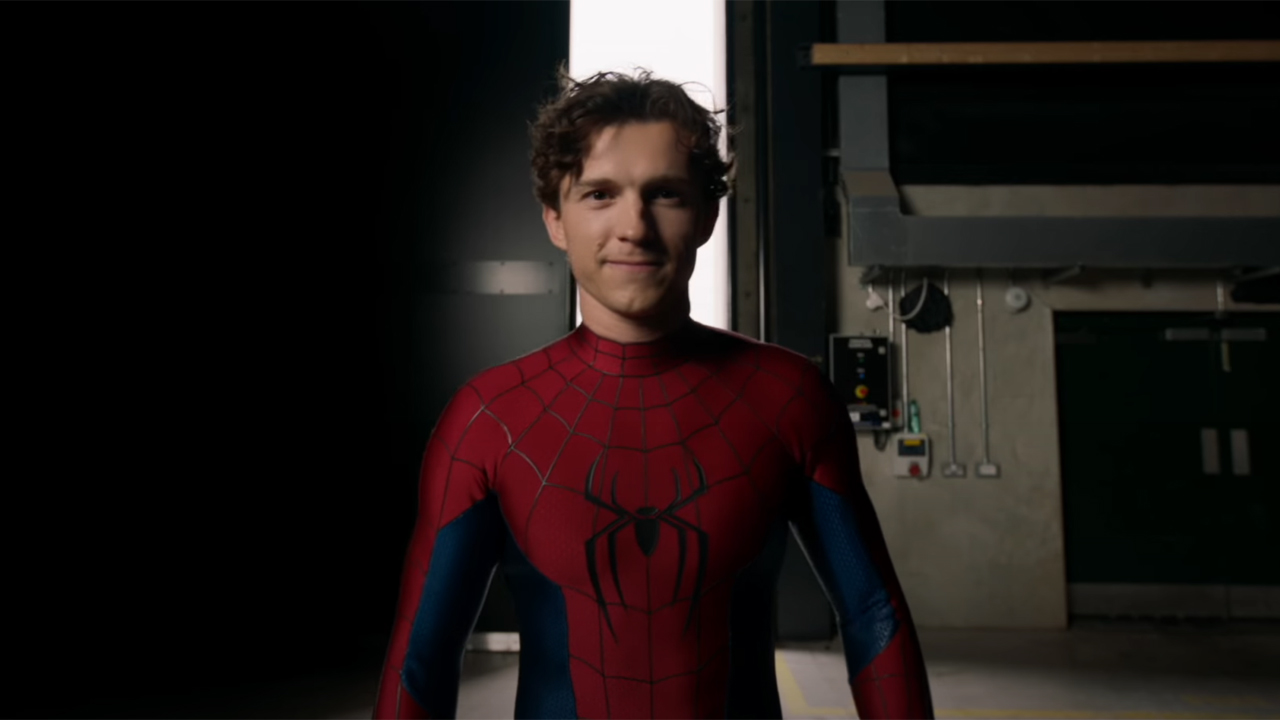Script Review: Forbidden Planet Could Be James Cameron's Next
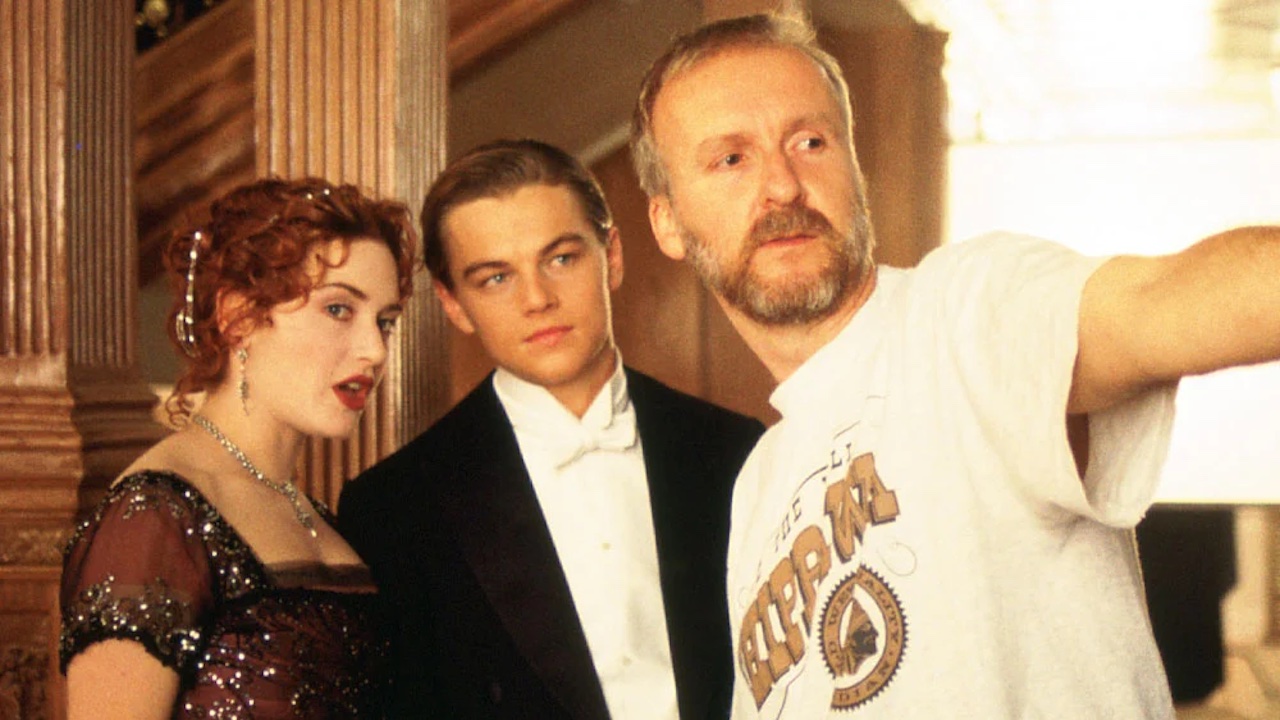
Avatar is out on DVD and still we don't know what director James Cameron plans to do next. Cameron remains indecisive, though he has a laundry list of movie projects he's considering being involved in. Among them Avatar 2, Battle Angel Alita, another underwater movie no one wants to see called The Dive, and Forbidden Planet. As recently as a couple of months ago Cameron confirmed that he was actively involved in developing Forbidden Planet but hadn't “made any decisions about it yet.” We're still waiting for him to make one.
While we wait, let's take a closer look at what he's considering. As the name suggests, Forbidden Planet is based on the classic 1956 science fiction movie of the same name. Till now most have assumed this would be a remake, but since I have the J. Michael Straczynski written script Cameron's planning to use sitting in front of me on my desk, I can tell you that it is absolutely not. Instead what JMS has done is craft a well-thought out, straight-up prequel. More than that, he's laid the groundwork for a whole franchise of Forbidden Planet movies which could eventually lead to a remake of the 1956 film down the road, but not until they've told at least two completely new stories on screen.
There are similarities here between what Cameron's already done on Avatar and what he could do with Forbidden Planet. Both movies center on exploring one complex, fully realized world and both movies begin with a group of humans landing on an alien planet to uncover the mysteries of its environment. In Avatar it's a world covered in and controlled by sentient biology, in Forbidden Planet it's a world covered in and controlled sentient technology. Replace the lush jungles of Pandora with an unbelievably massive, globe-spanning, alien city and you'll get what I'm hinting at here. From there the stories diverge drastically but if Cameron wanted to make his next step a movie with a similar theme but not so similar that it's basically an Avatar do-over (or for that matter an actual Avatar sequel) then Forbidden Planet is the perfect project.
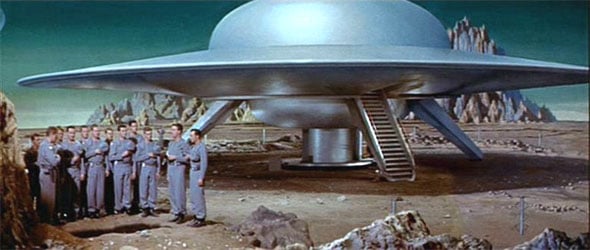
At this point fans of the original movie are probably freaking out. In the first Forbidden Planet the planet in question, Altair, is a barren wasteland. Don't worry, JMS knows what he's doing. As he says in the script “I'm going somewhere with this” and by the time the script is finished he does a pretty great job of fitting these seeming contradictions together with the original film while setting up other unrelated sequels.
The 1956 Forbidden Planet told the story of an Earth vessel sent to an alien planet called Altair, where twenty years earlier another human crewed vessel called the “Bellerophon” vanished. This Forbidden Planet tells the story of the Bellerophon, and even if you've seen the original movie which discusses that ship's fate intimately, it's nothing at all like you'd expect while at the same time remaining faithful to the subsequent story already told in the first movie full of clever nods to its cinematic predecessor. In fact Straczynski's take hints at things going on behind the scenes of the original movie, and if it's made it'll change the tone of that film the next time you watch it, while at the same time sticking with established facts.
Like those classic science fiction serials of which the 1956 movie was a part, JMS's script seems less concerned with explaining how and why this story happens and more concerned with just getting down to the business of spaceships, strange worlds, and hard science fiction. In doing so it changes some of the minor nuances of the original movie. Instead of being set in a far off future, the prequel's actually set in a near future. The technology used to send the Bellerophon to Altair is pretty new, and the way in which mankind gets the knowledge needed to do it is a critical component to the plot.
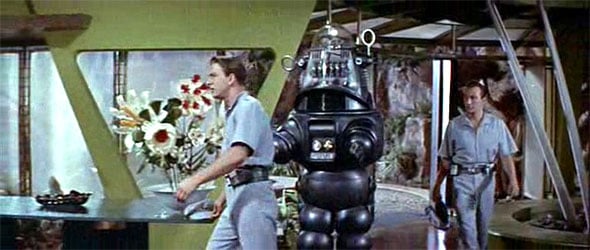
Almost the entire movie is spent on Altair, with the crew wandering around trying to uncover the secrets of an absent alien race. Only two characters from the 1956 film make it into the prequel: Dr. Edward Morbius and Robby the Robot. Morbius is a linguist aboard the Bellerophon. Robby on the other hand, is not exactly the same robot seen in the original film, think of him more as that robot's template. Except of course, he's been drastically redesigned.
Your Daily Blend of Entertainment News
Robby is there on the planet when the crew arrives and he's described in the script as twelve feet tall and angular, though vaguely humanoid. This Robby, actually named RBI, is sleek and menacing in appearance, his limbs connected to his torso by energy more than metal. By contrast the 1956 Robby was seven feet high and looked kind of like what would happen if you stuck and egg-shaped fishbowl on the Michelin Man's head. It's an improvement. It also allows him to be an active participant instead of wandering around ineffectually and staring, as he did in the original film. At one point in the script, Robby actually goes into battle, and it's awesome.
Morbius is the movie's villain, if there is one, in much the same way he was in the first film. This time he's more knowingly involved and much of what he does won't really fit with the character you know from the original movie, at least until the end when JMS snaps all the pieces together.
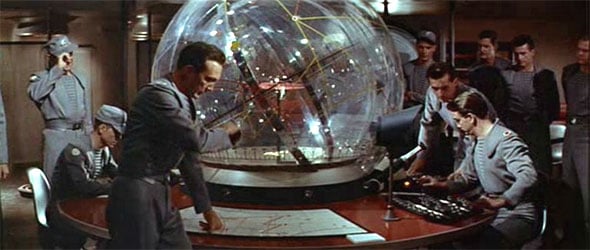
The real heroes of the story are the Bellerophon captain, Stearns, and Morbius's soon to be ex-wife Diana. I know, in the 1956 movie Morbius gives his wife a different name, and I'm somewhat at a loss to explain why they'd want to change it, but just roll with it. Though the movie's mostly faithful, little details like that get tweaked and you can't really nitpick over them when JMS seems so determined to connect the dots everywhere else. A bold decision really when you consider how few people have actually seen the original Forbidden Planet and most who see the new one won't really care.
The script's strength is the fast pace at which it moves and its willingness to tackle hardcore science fiction. It's incredibly original too, not just the story but in the little details JMS works into the screenplay. One of the big problems a lot of science fiction fans had with Avatar was how generic all the technology felt. JMS really tries to push the envelope in that respect coming up with new ideas about the way the inside of a spaceship should look and work, as well as incorporating some of the old (and never again used) ideas from the original movie, like the green stasis pods used before jumps into hyperspace. JMS, as the creator of one of the greatest sci-fi shows in the history of television in Babylon 5, knows a thing or two about creating an original, unique science fiction universe.
But at times the characters seem a little thin and it's hard not to read it and think of it as a lot like the failed Lost in Space movie, only with bigger set pieces and more brains behind it. It also commits the sin of using amnesia as a key plot device, always a dicey decision in any storytelling endeavor. The ending, the one that fits all the pieces together to connect to the 1956 version, also feels a little rushed. In fact a lot of this early draft feels like it needs some of the cracks filled in still, and maybe that's something they'll do as the go along, or maybe not.
Yet the script for Avatar suffered from some of those same problems too and that seemed to work for Cameron. Maybe that makes Forbidden Planet his kind of movie. It's like Avatar with more originality. Or maybe Straczynski will do another pass, flesh out those bare spots, and work enough of his proven sci-fi genius into the script that it'll fill in the places where Cameron usually misses something. If he does, this could be the perfect filmmaker/writer partnership.

